Tri-amped Klipsch R-34C Centre Speaker

As you may have seen, I built my own 5.1 HiFi system with LM3886 amps. It sounds good and is powerful. One challenge I had, however, was not always clearing hearing dialogue. This is especially true with more recent films and TV shows and also because we live near an airport, and the flat is modern, but not ideal for acoustics since the living room is shared with an open plan kitchen.
In summer it's extra difficult as the desk and tower fans must go on, and/or sliding door to the balcony must be opened, really challenging the ability to hear what's on the TV.
This often means I need to crank up the volume up during speaking scenes, but then as soon as some action or music arrives in the soundtrack, boom-boom, those LM3886 amps and floorstanders kick in and even the neighbours hear!
I did adjust the gain of the centre speaker significantly higher to compensate, but even that speaker was become unnecessarily loud during action/music, and it didn't sound well with the rest of the speakers.
The centre speaker is the most important speaker in home theatre as it is mostly handling dialog, but pretty much always is handling something.
I looked at changing it and adjusting the speaker placement so that it sits right under the TV and raised the height of the TV a bit for the speaker by building an extra shelf (raising the height of the TV has taken it to eye level, which is better for our necks).
My existing speaker is quite large, so I looked for a longer speaker with more drivers but less height - a bit like a sound bar. The Klipsch R34-C had a deal on and after putting in my system, it did enhance the clarity of dialogue (though it does have a harsh sound to it and sibilance is more noticeable).
It came with a new problem though, when loud scenes came in, the horn tweeter clipped under the stress of the bass. Disappointing really.
For most people, it is probably fine as most home theatre receivers can cross over the centre channel at (say) 100Hz and send the rest of the energy to a subwoofer, or front pair. My DIY 5.1 amp build with simple Chinese 5.1 decoder doesn't have that option though, and I don’t use a subwoofer. I also noticed that while most voices were fine, there were some gaps.
I didn't return the speaker as I knocked it slightly and even though the retailer probably would have refunded, it's not nice for the next person to get a product with cosmetic defect. What I did instead is think this is a good chance to experiment with bi-amping, or tri-amping.
My first home theatre amplifier had bi-amplified front L/R speakers, running ESP P3A amplifiers. The speakers were 2-way bookshelf speakers though, so didn’t really gain much benefit of bi-amplifying, and looking back now, 21-year old me did it a little wrong.
So, the 20 year old ESP P09 board (Linkwitz-Riley 24 dB/octave crossover) has been unused for years, but now can be re-configured as a 3-way mono crossover.
I would aim for crossover frequencies of 275Hz and 1.6kHz, meaning two of the 3.5 inch drivers in the Klipsch would respond below 275Hz, two would respond between 275Hz and 1.6kHz, and the horn tweeter would cover 1.6kHz and above.
This would mean I’d need three amplifiers, instead of one. The single LM3886 would be removed, and I would install a 12V 80VA transformer I had, and I planned to build an LM1875 and TDA7265 chip amplifiers anyway, so on I went...
First, the speaker had to be altered. To get the crossover out nicely, all the speakers need to be removed from the front first. These can be unscrewed with hex/Allen keys, and then the cables can be disconnected via the quick connect/spade terminals.
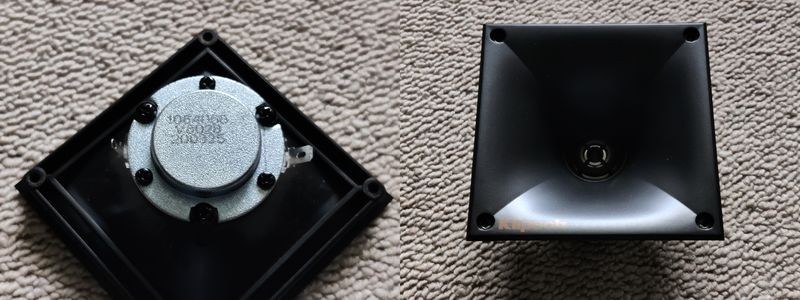
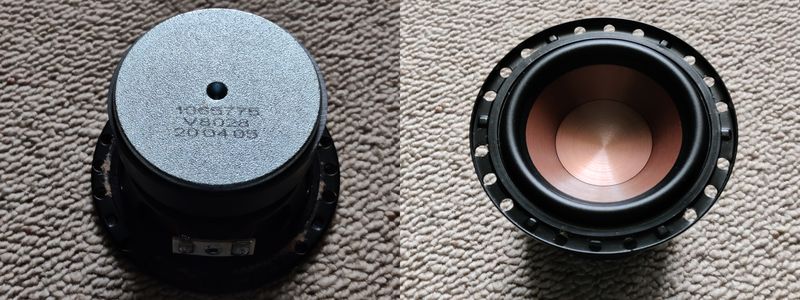
The old crossover board had old components de-soldered, and configuration adjusted from 2-way stereo to 3-way mono. I then tested it on the oscilloscope, and I can confirm that it's a stable and a very accurate crossover. There is pretty much no chance any passive crossover can outperform it.
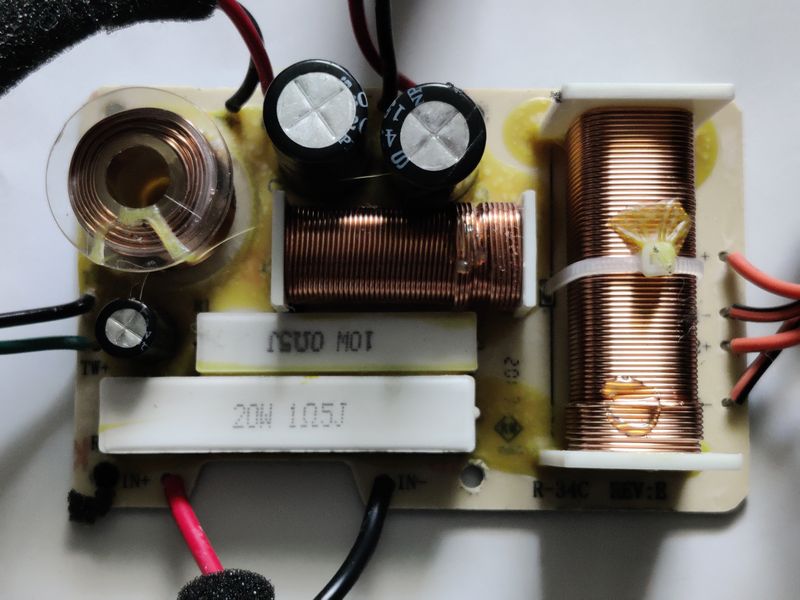
The Klipsch R34-C crossover is hard to reverse engineer. I measured all components, but it won't be accurate. Without measuring the speaker impedance across a frequency range though, those values cannot be translated to crossover frequencies, since the crossover has no impedance compensation, even the L-pad has no parallel resistor. All that's known is it's 12dB/octave. Overall, component quality and design look pretty mediocre.

Both the LM1875 and stereo TDA7265 amplifiers were planned builds anyway. These chip amps can deliver around 17W per channel off +/-17V (from a 12V AC transformer). The TDA7265 will power the four bass and mid drivers. The LM1875 can operate off the same PSU and provide more than enough power for the tweeter. This is a split of around 40% of power going to the bass woofers, 40% to the mid woofers and 20% to tweeter.
So, I went with the huge experiment. The online specifications say the crossover frequency is 1600Hz, so I went with that as the tweeter crossover. It would probably sound more natural with a higher crossover frequency for the tweeter, but I wanted it to retain its ability for vocal clarity.
The rest of the speaker drivers are crossed over in pairs. Each woofer is 4-ohms, but in series they are 8-ohms. The crossover seems to cross over the two on the left at a lower frequency than the two on the right. This is probably to minimise sound waves cancelling out at higher frequencies. At lower frequencies though, all woofers should kick in.
My experiment though was to separate them in pairs completely - so two woofers operate below 275Hz, and two operate between 275Hz and 1.6KHz. This will hurt bass response a bit, but it is not very good to begin with and my left/right floorstanders pick up the bass anyway.
To connect to three amplifiers, I had to modifying the back of the R34C and add two additional terminals - one for low pass, one for band pass (mid), one for high pass (tweeter) and a shared ground. Ideally, the grounds should be separated too, but given the relatively low power and that all amplifiers are not bridged, sharing them is OK and means I only need to add two more terminals and can use my old 4-core bi-wire. I replaced the existing terminals with ones that can accept banana plugs (unlike the originals)
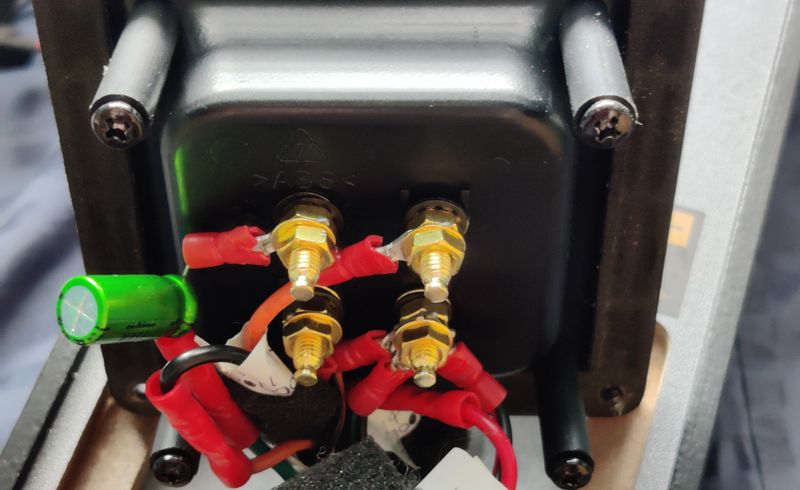
The low and mid woofers connect directly to the outputs of the TDA7265 stereo amp. I rebuilt my DC protection board in my amp to handle 6 channels (2 centre + existing front L/R, rear L/R). The tweeter connects via a 47uF capacitor which protects the tweeter from harmful amplifier power on/off thumps or DC failure.
I've been completely unscientific about it all - but I played radio and adjusted each output with the trimpots on the ESP P09 board until it sounded 'right' to me. In place and in use, I'm happy with the result. It 'could' do with more bass, but at least we can raise the volume and not disturb neighbours. The clarity of the voices/dialog has improved compared to the passive crossover driven by a single amplifier, and certainly over the original larger centre speaker. The clipping from the tweeter is gone too.
For people who are more serious about home cinema, I wouldn't recommend the speaker. Actually, when you dismantle it and look at the speakers, you wonder why it costs what it does and I completely get why people build their own speakers because, if done right, home builds can be superior. I would attempted a proper home build speaker too if I lived in a house with a garden/garage.
For those of us still in a purpose built open plan flat/apartment, you can still get a good compromise. When I listen to music, I disable the centre speaker (and rears), so I get natural stereo L/R as the artist intended.
It has taken me a few months between getting the speaker and implementing the changes, as I had to build the amplifier boards (twice for the TDA7265), adjust the ESP P09 carefully, test them all individually, build a PSU board (ended up doing this twice too), rebuild the DC protection board and make large adjustments to the HiFi 5.1 amplifier to install the new transformer, PSU, amplifiers (needing more holes drilled and tapped into the heatsink) and the voodoo art that is grounding!
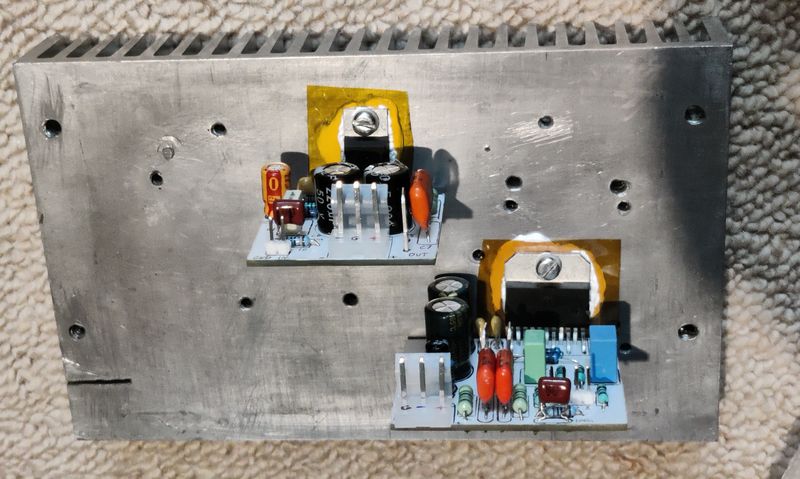
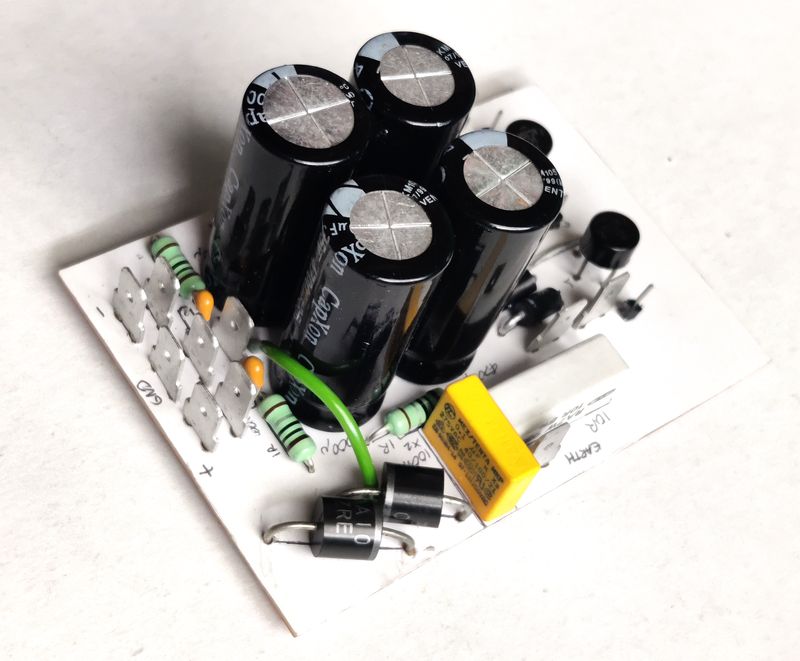
However, much learnt, and the result is pleasing. For those interesting in proper bi-amping or tri-amping - I think it's one of the best things us DIY audio amateurs can do. An active crossover such as the ESP Project 09 is interesting to build and can be configured and adjusted easily. You can read about bi-amping more at this ESP Article - Benefits of Bi-Amping (Not Quite Magic, But Close).
There's an itch at the back of my mind now to actually rebuild the whole system with bi/tri-amping. It wouldn't need powerful amplifiers, just lots of them!
